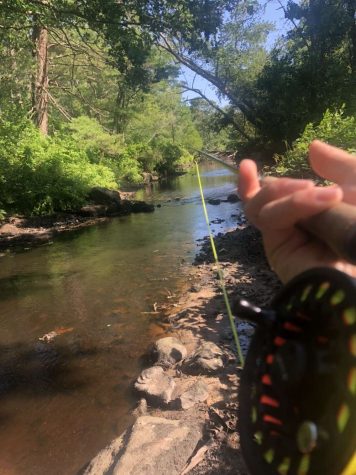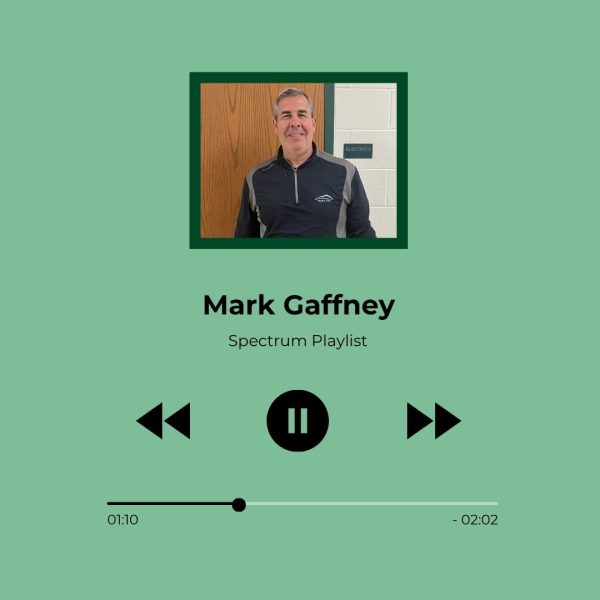The Fortnite epidemic explained

SEEMINGLY EVERYWHERE YOU LOOK, Fortnite: Battle Royale appears, much like the opponents you never saw coming in the game. People post about their wins, or their Victory Royales on Snapchat and it’s hard to scroll through YouTube without coming across a suggested video of a professional gamer’s Fortnite live stream. As a dear friend of mine once said, “Fortnite is life.”
This new co-op video game (free to download on Xbox One, PS4, PC, and iOS) designed by Darren Sugg, and developed by Epic Games and People Can Fly was originally released July 25, 2017. In just 10 months, this new game became a hit among people of all ages and across the nation, bringing in a whopping $223 million in March from in-game purchases and upgrades, according to a report from the market research firm SuperData. People dedicate hours of their time a day to this game, and it’s become a popular genre of video in the YouTube gaming channel community as well.
According to Daniel Mackrell from Metro Gaming, Fortnite has a reported 3.4 million players as of February 2018. But the question remains: Why is Fortnite so appealing?
The premise of the game resembles something that is comparable to the Hunger Games franchise: 100 players are dropped onto an island (called the Fortnite Island) and the goal is to be the last one standing, after eliminating all other opponents, which is otherwise known as a Battle Royale. An incoming storm closes in on the island, pushing players together as the area of the island gets smaller, adding to the gameplay (another Hunger Games-esque move). Players can also build various structures using found and collected materials, which basically mirrors Minecraft’s entire premise.
That being said, Fortnite isn’t a Hunger Games or Minecraft knock off in the slightest. Nellie Bowes, a reporter from the New York Times, described Fortnite as a game that “took all the best elements of building, shooting, and survival games and merged them into one.”
Fortnite offers colorful, bright, animated graphics that have become a staple of the Fortnite brand. My 12-year-old brother Jake, an avid Fortnite enthusiast, commented on the animation. “The way it is more cartoony and less graphic makes it appealing to a younger audience,” he said.
One eighth grade girl (yeah, girls like Fortnite, too!) described how the visuals even “bring you into another world of reality.”
The unique graphics and design, complete with customizable characters with different “skins” and emotes (those quirky dances the avatars do), all around add a fun touch to a shooter and survival game.
Furthermore, a lot of the appeal in Fortnite comes from the game’s interactive features that allow players to game with their friends, and offer a unique gaming experience. Sophomore John Correiro noted, “It’s appealing because you can play with your friend [and] not only that, but you’re playing against other real people.”
This ability to mix up players and play with friends creates a different gaming experience with every new round.
The highly competitive nature of the game is, to put it bluntly, highly addicting. A friend of mine all the way from Las Vegas, Nevada, described this addiction perfectly. “All the players want to win, but 99% of them cannot,” he said, “so they keep trying and trying for the winning spot.” He also pointed out that the addiction grows as people win continuously, since they want to keep obtaining that high that comes with winning.
An 8th-grade student from Dartmouth Middle School described the gameplay as “nerve-riding” and also “EXTREMELY COMPETITIVE,” caps included to get her point across. The consensus is obvious – competition is appealing to all ages.
Adding even further to the game’s appeal is that Fortnite isn’t just for guys. Girls can play, and do play
I have played Fortnite only twice in my life, and both times were the day before I sat down at my laptop to write this article.
To be quite honest, it was kind of traumatic. I’m not much of a gamer (unless Mario Kart and Just Dance count), and so I thought it would be a great idea to ask my brother for help. Instead, he yelled at me the entire time about how I’m really bad at this, and what am I doing, and how can I not possibly be into this game?
In my defense, I had no idea how to use the controller so I blame my inability to do anything correctly on that. I was just happy to have ended in 31st in Solo Mode, though that probably has something to do with the fact that I spent not just one round, but two, hiding in a shack trying to “build” stairs.
What can I say?
I may not be super into Fortnite, but after attempting to play, I sure do have respect for everyone who is.
Play on.












Jimmy Visal • Nov 21, 2019 at 8:58 pm
Fortnite is an amazing game created by Epic Games. Epic Games is awesome.
Jimmy Visal • Nov 21, 2019 at 8:57 pm
Fortnite is an amazing game created by Epic Games. Epic Games is awesome.
Joe Mamma • Sep 16, 2019 at 8:24 am
Very nice!
Mike Rotch • Mar 12, 2019 at 11:13 am
I reaaly appreciate this
Nicole Sheahan • May 30, 2018 at 11:24 pm
Thanks for the insights and information. I do think this helps overall understanding. It would be interesting to hear from folks who abandoned a previously beloved game (such as AofE) to play Fortnite and why this game appeals more. It sounds as though each battle is its own new beginning, which could provide its own appeal?
Kudos for giving it a try and for surviving your brother’s annoyance. 😉
sam brodsky • May 25, 2018 at 6:43 am
I was hoping for some insight into the craze. Maybe you need a guest writer? Or a friend who bets you that they can make you enjoy it?